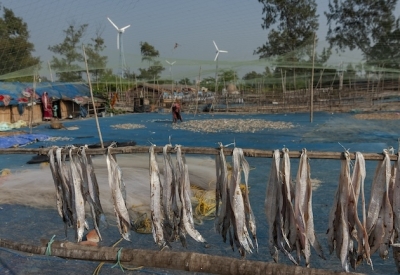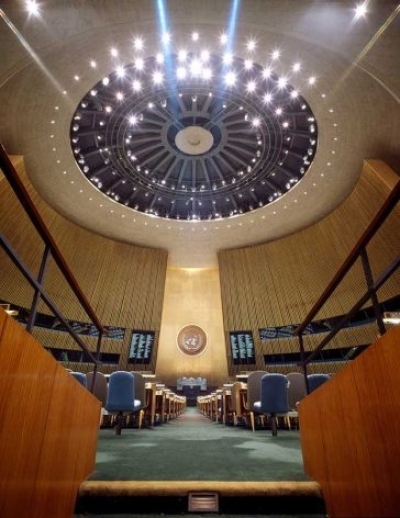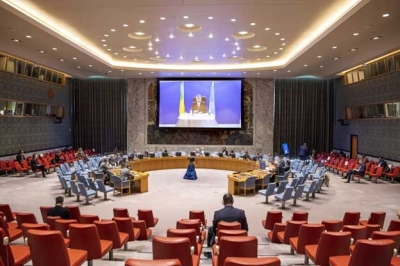KUALA LUMPUR, Malaysia, Oct 04 (IPS) — Ajay Banga was anointed World Bank president for promoting financial inclusion. Thanks to its success and interest rate hikes, more poor people are drowning in debt as consumer prices rise.
Meritocratic leadership? Since the International Monetary Fund (IMF) and World Bank were set up by the United Nations Conference at Bretton Woods in 1944, the US president’s nominee has been automatically appointed Bank president. By convention then, the Bank president is a US citizen, while the IMF head is European.
Banga went to the World Bank in Washington, DC from the business world. He had spent his entire career in transnational corporations, moving from Nestlé in India to Citigroup’s microfinance division, and then Mastercard. In 2020, he became chair of the International Chamber of Commerce, founded in 1919.
For over a decade, he was chief executive officer (CEO) of Mastercard, which he denies is a credit card company. He gave shareholders a cumulative total return of 1,581% – almost five times the S&P500 market average! By 2020, it was the 21st most valuable corporation in the world, having risen from 256th when he took over.
Like most US appointees to head the Bank, Banga had no experience or earlier interest in development finance. Now, he is obliged to pursue US interests and agendas. He has already announced he will rely on the private sector for funds and ideas.
South African laboratory Long the world’s most unequal society, South Africa (SA) became a laboratory for financial experimentation from the 1990s, from commercial microcredit to mass collateralization of welfare payments.
Leading microcredit authority Milford Bateman has shown how the SA microcredit business enriched a small white elite while economically dividing and undermining poor urban and rural black communities.
In the 1990s, male senior managers of SA financial institutions abused ‘seniority’ for their own private short-term financial gains to defraud customers, shareholders, governments and the general public.
Usurious debt promotionBateman, Patrick Bond, Lena Lavinas and Erin Torkelson have shown how Banga’s SA ‘financial inclusion’ initiative involved ‘predatory financing’. As CEO, he mobilized MasterCard to promote and profit from it.
Over a decade ago, Banga pioneered a major ‘fintech’ (financial technology) partnership with Net1, a data services firm in SA. Later, in 2016, the World Bank Group’s International Finance Corporation (IFC) bought 22%, its single largest share.
The IFC bought into Net1 to extend ‘tested’ financial services to the poor. Although Net1 was already known to be very problematic, the IFC was keen to promote private fintech platforms regardless of their consequences for the poor.
Of SA’s 60 million people, over 40% receive small monthly grants for unemployment relief, child support, retirement pensions and disability. With Mastercard’s ‘cashless’ electronic payment services appreciated for convenience and efficiency, Banga admitted, “If these guys use their card, I’m going to make money”.
Once card expenses exceed grant income, Net1 charges ‘service fees’, including a usurious 5% monthly interest rate! By 2015-17, it was earning more from financial inclusion than from distributing government grants. Thus, Net1’s shadow banking system remained unregulated.
Net1 lost its contract after bad publicity about its actual impact on the SA poor. Later, it was found to be sabotaging the state-owned post office (PO) asked to take over. Long under-funded and struggling to manage, the SAPO may soon lose the contract to another private fintech provider.
Welfare payments as debt collateral While its digital payment services delivered monthly payments to all welfare recipients, these transfer streams effectively guaranteed credit extended. Thus, despite usurious credit terms, it faced little risk of default.
This de-risking strategy turned government welfare benefit payment commitments into debt collateral. Thus, regular cash transfers monetizing poverty relief and mitigating deprivation also served to service usurious debt.
Despite dubious evidence, World Bank staff claimed billions would escape poverty through greater access to digitalized microfinance services – small loans, savings opportunities, money transfer payments and technology, debit orders, etc. – run by ‘profit-seeking’ fintech platforms.
Much better access to such services had been enabled over a decade earlier by endorsing and celebrating microfinance and increasingly widespread credit/debit card access. But even ex-cheerleaders now agree microfinance has not reduced poverty.
Previously celebrated early fintech platforms have become quite problematic, and are now widely seen as exploitive of users. Even the Paypal CEO admits financial inclusion is essentially a buzzword for incorporating more into the financial system.
Innovation for exploitation Two ostensible development programmes – cash transfers and financial inclusion – were very profitably integrated by Banga in SA. The public-private partnership between the government cash transfer programme and the private fintech payment-cum-credit services has become a usurious techno-financial monopoly.
Cash transfers and other services are increasingly delivered using financial inclusion technologies. With such technologies disbursing cash transfers, government-funded poverty relief programmes have been used to expand such credit facilities.
This link has enabled offering credit to cash transferees. As Erin Torkelson has shown, the Net1’s involvement in the SA cash transfer programme enabled a financial monopoly based on proprietary technology.
Government-funded cash transfers have thus provide security for more borrowing by the poor, virtually eliminating risk for the creditor. As all risk is borne by the borrowers, technologies bundling cash transfer payments with easy credit facilities ensure they cannot default.
Such bundling ensured the poor could not default, while encouraging recipients to borrow. By making the monthly government grants serve as collateral for credit, the programmes have ensured nearly risk-free profit for usurious creditors while deepening the indebtedness of the poor.
IPS UN Bureau






